Thingiverse

Water meter reader by waxipedia
by Thingiverse
Last crawled date: 3 years, 1 month ago
I wanted to read the data of my analogue water meter with an arduino. The water meter has a small cog wheel made of some reflecting material. Just have a look at the images. The first idea was to illuminate this wheel with a bright light source and detect the reflected light. After a lot of experimenting I had to drop this idea. The problem was, that the cog wheel did not reflect the light uniformly for each tooth. Some teeth did reflect the light to the sensor while some other teeth did not.
So the next idea was to measure the reflected light intensity of one of the red arrows. The arrow with the 0.001 scale measures 1 litre each turn. A green super bright LED was used to illuminate the water meter display and a photo transistor with a simple amplifier should detect the signal.
It is important to use a green LED because green is the complementary color to red. The red arrow will absorb most of the green light while the white background will reflect most of it.
The first try without some dedicated optics resulted in a not so stable result. After a lot of fiddling with the screws I decided to attach a simple lens. But all lenses I could find were quite expensive and it was very hard to find one that fits the small diameter I needed. But there is a cheap very effective alternative on eBay. I found a complete camera replacement module for just 3€ for a samsung smart phone "Samsung S8500 Kamera Kameramodul GT-S8500".
http://www.ebay.de/itm/252821221343?_trksid=p2057872.m2749.l2648&ssPageName=STRK%3AMEBIDX%3AIT
But I think any other smart phone camera module will do this job. You will need to disassemble the complete camera module. The only part needed is the lens.
The result was quite good. I could see a strong signal on the scope. (Between 2.5V and 3.5V while the red arrow is turning around)
The complete design consists of the water meter sensor device, a box for the electronics and the electronics itself.
Beneath the printed parts you will need two two threaded rods (ca. 80mm length and 3mm diameter), 2 M3 nuts, 2 M3 locking nuts and a few washers.
I reused an old USB-A socket that I glued into the water meter cap to lead the electric connections out of the sensor. Some heat shrink tube is also very useful.
So the next idea was to measure the reflected light intensity of one of the red arrows. The arrow with the 0.001 scale measures 1 litre each turn. A green super bright LED was used to illuminate the water meter display and a photo transistor with a simple amplifier should detect the signal.
It is important to use a green LED because green is the complementary color to red. The red arrow will absorb most of the green light while the white background will reflect most of it.
The first try without some dedicated optics resulted in a not so stable result. After a lot of fiddling with the screws I decided to attach a simple lens. But all lenses I could find were quite expensive and it was very hard to find one that fits the small diameter I needed. But there is a cheap very effective alternative on eBay. I found a complete camera replacement module for just 3€ for a samsung smart phone "Samsung S8500 Kamera Kameramodul GT-S8500".
http://www.ebay.de/itm/252821221343?_trksid=p2057872.m2749.l2648&ssPageName=STRK%3AMEBIDX%3AIT
But I think any other smart phone camera module will do this job. You will need to disassemble the complete camera module. The only part needed is the lens.
The result was quite good. I could see a strong signal on the scope. (Between 2.5V and 3.5V while the red arrow is turning around)
The complete design consists of the water meter sensor device, a box for the electronics and the electronics itself.
Beneath the printed parts you will need two two threaded rods (ca. 80mm length and 3mm diameter), 2 M3 nuts, 2 M3 locking nuts and a few washers.
I reused an old USB-A socket that I glued into the water meter cap to lead the electric connections out of the sensor. Some heat shrink tube is also very useful.
Similar models
3dwarehouse
free

Vertical Traffic Light 4
...ouse
2 signal traffic light with left turn arrow. #cars #green #highway #insafracture #light #red #road #signal #traffic #yellow
3dwarehouse
free

Electro Tech LED 8-inch traffic signals
...t #explode #found #green_signal #led #modules #only #rare #real #red #red_signal #reflective #traffic_signals #use #yellow_signal
thingiverse
free
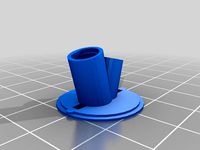
ferraris sensor holder by endif
...ct the red mark on the counting wheel. the wheel is supposed to be 6mm below the base plate of the holder to get optimal results.
grabcad
free

QRD1114 reflective sensor
.... it detects the reflected infrared signal. ideal for sensing black-to-white transitions or can be used to detect nearby objects.
thingiverse
free

Smart water leak sensor
...
total cost for the parts is ~6$.
full details (schematics, code etc): https://pulsar124.fandom.com/wiki/smart_water_leak_sensor
grabcad
free

Chain wear indicator
... member occurred, a magnetic sensor will detect greater number of rotations of the wheel and it will send a signal to alarm light
thingiverse
free

Light-up Coaster by platinumfusiontechnology
... if a drink/cup has been placed on the coaster.
documentation for the sensor: https://www.sparkfun.com/datasheets/bot/qrd1114.pdf
3dwarehouse
free

Horizontal Traffic Signal Advance Green LED arrow (arrow right of green light) 12 Inches
...ce green led arrow (arrow right of green light) 12 inches
3dwarehouse
horizontal traffic signal led arrow 4x12' a #utilities
grabcad
free

water meter
... surface attract the hole light and white surface reflect it so the sensor which is placed in the top hole can sense the rounds)
3dwarehouse
free

Quebec Traffic Signal heads
...ust some collection of modern led traffic signal heads with square red lights and diamond yellow lights, and also bimodal arrows.
Waxipedia
thingiverse
free

Wire spool holder by waxipedia
...wire spool holder by waxipedia
thingiverse
just another holder for all the wire mess on your desk.
you will need a 8mm rod.
thingiverse
free
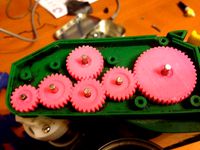
Roomba 581 gear by waxipedia
...roomba 581 gear by waxipedia
thingiverse
replacement gears for a roomba 581. but it should fit lot's of other models, too.
thingiverse
free

Customizable ribbon cable clip by waxipedia
...ple customizable ribbon cable clip.
you just need to know the number of wires, the width of the cable and the height of the clip.
thingiverse
free

Hollow wall box by waxipedia
...ize of a standard hollow wall box. just buy a cheap standard box from your hardware store to reuse the screws with this one here.
thingiverse
free

Wall mount for a Rowenta Air Force AC9258 vacuum cleaner by waxipedia
...r my new rowenta vacuum cleaner. so i designed one that fits my needs. it has an integrated cable guide for the power cable, too.
thingiverse
free

Dial gauge holder for Velleman Vertex (K8400) by waxipedia
...e in the holder.
the whole thing can be attached and removed without any tools and is designed for the two printer head version.
thingiverse
free

Customizable ribbon cable clip by asti
...a simple customizable ribbon cable clip. (original design by waxipedia http://www.thingiverse.com/thing:2126875) parameters: wire count cable width clip height clip...
thingiverse
free

Allit StorePlus Holders remixed by Albager
...storeplus holders remixed by albager thingiverse i just used waxipedia#39;s holder and changed it to my needs. until now,...
Reader
archive3d
free
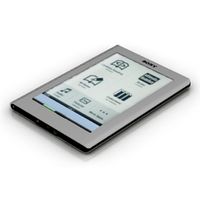
Sony reader 3D Model
...book reader
sony reader prs 600 n250413 - 3d model (*.gsm+*.3ds) for interior 3d visualization.
turbosquid
$20

RFID Reader
...royalty free 3d model rfid reader for download as obj and 3dm on turbosquid: 3d models for games, architecture, videos. (1450180)
turbosquid
$18

Biometric Reader
... available on turbo squid, the world's leading provider of digital 3d models for visualization, films, television, and games.
turbosquid
$5

Card Reader
... available on turbo squid, the world's leading provider of digital 3d models for visualization, films, television, and games.
turbosquid
$1

E-reader
...3d model e-reader for download as blend, dae, obj, stl, and x on turbosquid: 3d models for games, architecture, videos. (1686014)
turbosquid
$5

Reader Table Lamp
... 3d model reader table lamp for download as max, obj, and fbx on turbosquid: 3d models for games, architecture, videos. (1354074)
3d_export
free

the reader armchair
...his model are made of substance painter software and are of the highest quality.<br>hope you enjoy it.<br>smj hoseini
turbosquid
$10

Random Reader Rabobank
... available on turbo squid, the world's leading provider of digital 3d models for visualization, films, television, and games.
turbosquid
$1

Credit Card Reader
... available on turbo squid, the world's leading provider of digital 3d models for visualization, films, television, and games.
3d_export
$10

Set Reader 3D Model
...set reader 3d model
3dexport
book lamp whiskey glass drink botle decor
set reader 3d model raman 98904 3dexport
Meter
3d_export
$5

Meter
...alog voltmeter and analog ampere meter is created with 3ds max 2018 and is ready to use and configurable as per your requirement.
3d_export
$5
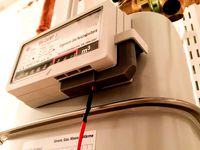
gas meter with regulator
...gas meter with regulator
3dexport
american gas meter is one of the mechanical gas meters
turbosquid
$48
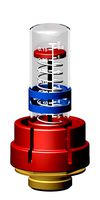
Flow Meter
...bosquid
royalty free 3d model flow meter for download as lwo on turbosquid: 3d models for games, architecture, videos. (1182781)
turbosquid
$20

Micro Meter
...osquid
royalty free 3d model micro meter for download as fbx on turbosquid: 3d models for games, architecture, videos. (1350448)
turbosquid
$1

electric meter
...d
royalty free 3d model electric meter for download as blend on turbosquid: 3d models for games, architecture, videos. (1499520)
turbosquid
$60
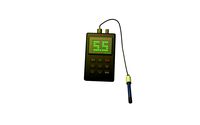
PH meter
...alty free 3d model ph meter for download as 3ds, c4d, and fbx on turbosquid: 3d models for games, architecture, videos. (1359254)
3d_export
$7

conveyor 12 meters
...conveyor 12 meters
3dexport
this is a belt conveyor. 12 meters of lenght.
turbosquid
$3

electronic meter
...del electronic meter for download as blend, dae, fbx, and obj on turbosquid: 3d models for games, architecture, videos. (1545606)
turbosquid
$56
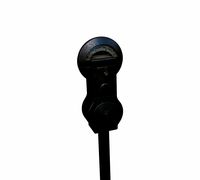
Parking Meter
... available on turbo squid, the world's leading provider of digital 3d models for visualization, films, television, and games.
turbosquid
$29
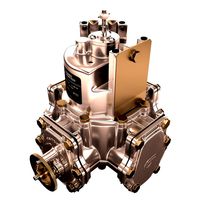
Volume meter
... available on turbo squid, the world's leading provider of digital 3d models for visualization, films, television, and games.
Water
turbosquid
$2
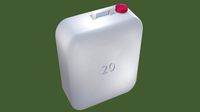
water bin water tank
...e 3d model water bin water tank for download as blend and obj on turbosquid: 3d models for games, architecture, videos. (1594026)
archibase_planet
free
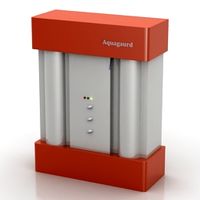
Water purifier
... purifier water purification water treatment
water purifier n050914 - 3d model (*.gsm+*.3ds+*.max) for interior 3d visualization.
3d_ocean
$6
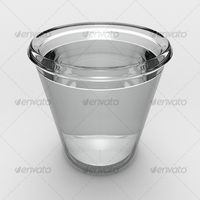
glass water
...glass water
3docean
clear glass glass water
glass filled with water
3ddd
$1
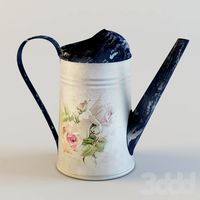
Watering pot
...watering pot
3ddd
watering pot лейка поливалка , лейка
watering pot
3d_ocean
$12

Water Dispenser
...dispenser furnishings lowpoly water
this is a water dispenser hot water for tea is winter and summer is cold for souls. have fun!
3d_ocean
$2

Water
...water
3docean
this is a tile able, hand painted water texture tile. included is one versions at 512×512 pixels in .tga format.
3d_export
$6

water tanker
...water tanker
3dexport
water tanker
3d_export
$6

water bottle
...water bottle
3dexport
water bottle
3d_export
$5

water bottle
...water bottle
3dexport
water bottle
3d_export
$5
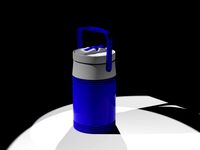
water thermos
...water thermos
3dexport
water thermos
